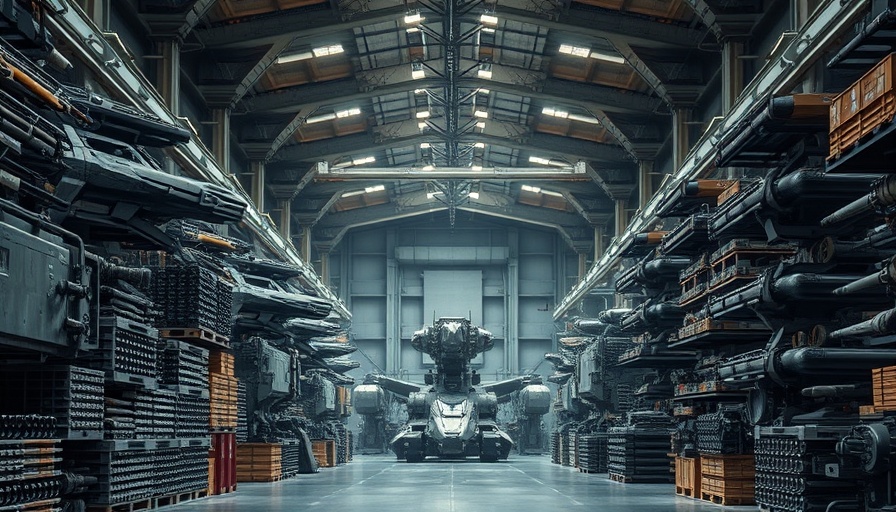
The U.S. Arms Export Boom: A Global Implication
The United States has firmly cemented its position as the world’s leading arms exporter, with recent reports indicating record arms sales amounting to $238 billion in 2023. This represents a significant increase, driven primarily by geopolitical shifts and heightened defense demands across various global regions, particularly in response to conflicts such as the ongoing war in Ukraine.
Current Global Landscape: Who's Buying What?
Much of the demand for American military equipment comes from countries looking to replenish their arsenals or bolster their defenses against perceived threats. Notably, Ukraine has dramatically intensified its arms imports, increasing them nearly a hundredfold since 2019. This escalation underscores the urgency with which countries are seeking to enhance military capabilities, particularly in light of Russian aggressions that continue to unsettle global peace.
Comparative Perspectives: U.S. vs. Russia
The U.S. has notably outpaced Russia, accounting for 43% of global arms exports, while Russia's figures have decreased by 63%. The implications are significant: as Russia diverts attention to its war efforts, the U.S. seizes an opportunity to establish alliances and solidify its status in the arms market.
Real-World Examples: The Impact of U.S. Arms
This arms export phenomenon isn't theoretical; it has manifested in concrete contracts, such as a $10 billion deal for High Mobility Artillery Rocket Systems (HIMARS) to Poland and substantial orders to Germany and Ukraine. These represent not just sales, but strategic partnerships reinforcing the U.S.'s extensive influence and offerings in global defense.
Future Trends: Arms Sales Outlook Post-2025
Looking ahead, analysts predict continued growth in the arms sector as international relations dictate procurement strategies. Emerging from the shadows of past conflicts, nations are evaluating their military ambitions, and the U.S.'s role as a primary supplier places it at a pivotal point in the new world order. Experts anticipate that arms trade will not merely stabilize but thrive in the upcoming years, presented against a backdrop of rising global instability.
Technology and Innovation: What’s Next for Arms?
In parallel with growing arms sales, technological advancements continue to revolutionize military capabilities. Innovations encompass everything from advanced shipbuilding technologies that enhance maritime defense to cutting-edge drone systems. As these technologies evolve, they are expected to intersect with the arms trade more intimately, driving demand for not just quantity but quality in defense procurement.
Understanding the Underlying Dynamics
While the narrative frequently centers on dollars and devices, it is crucial to understand the underlying socio-political dynamics that fuel this trade. During periods of uncertainty, such as the current geopolitical climate, nations often turn towards enhancing their military capabilities, making countries like the U.S. significant players in the global arms landscape. The confidence in U.S. military manufacturing and supply chains fuels increasing sales, creating a symbiotic relationship between technological advancement and arms distribution.
As the landscape of global defense continues to shift, the U.S. arms exports will play a critical role in shaping international security policies and geopolitical strategies for years to come. Keeping an eye on these trends will prove invaluable for stakeholders, analysts, and policymakers alike.
 Add Row
Add Row  Add
Add 




Write A Comment